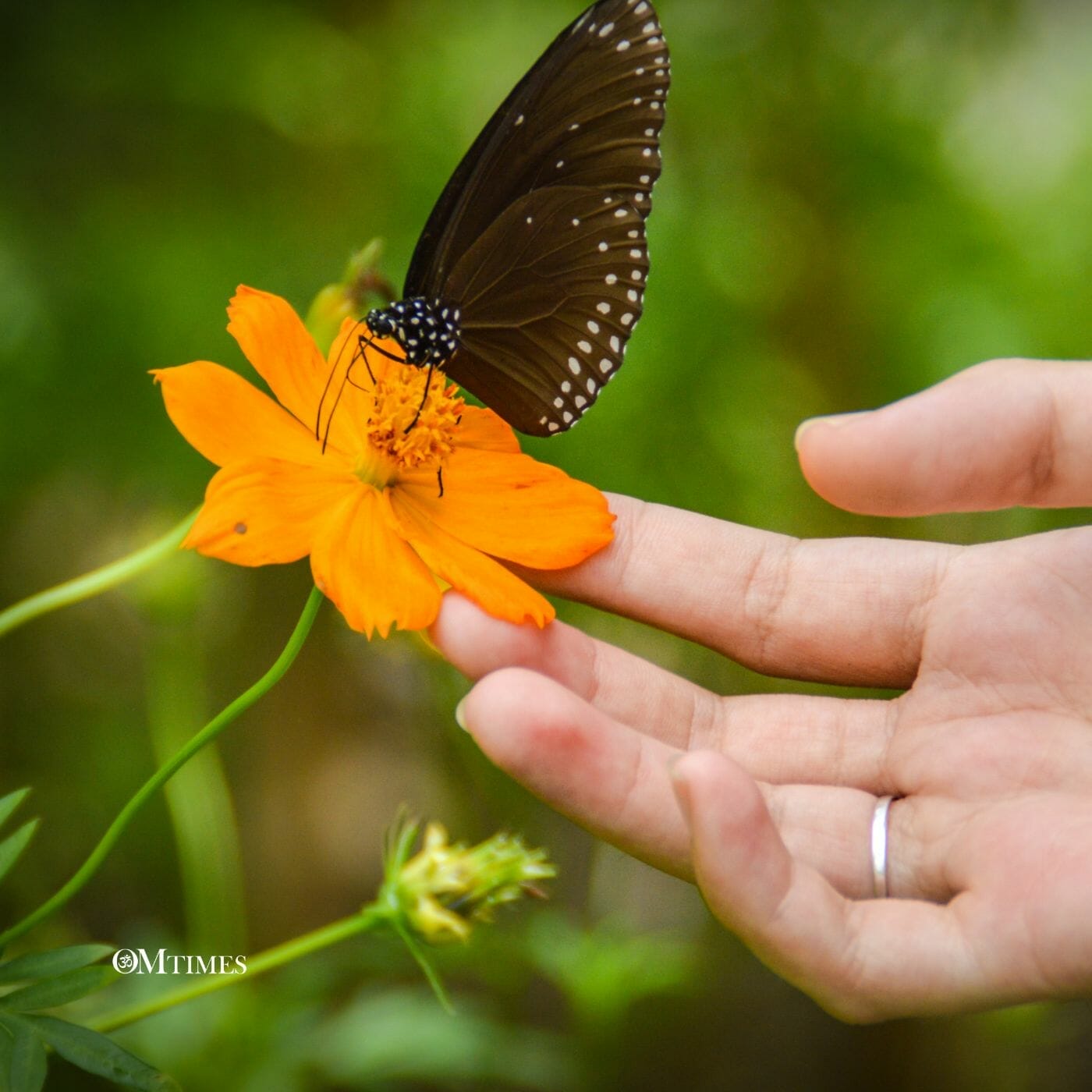Can We Save the World Practicing Ahimsa?

Ahimsa is a Sanskrit term that means non-violence or non-harming. It is a principle of non-violence that is widely practiced in Indian philosophy, particularly in Jainism, Buddhism, and Hinduism. Ahimsa can be seen as a way of life that is focused on reducing harm to all living beings, including humans, animals, and the environment.
Practicing Ahimsa Can We Save the World
Ahimsa is not mere negative non-injury. It is positive, cosmic love. It is the development of a mental attitude in which hatred is replaced by love. Ahimsa is a true sacrifice. Ahimsa is forgiveness. Ahimsa is Sakti (power). Ahimsa is a true strength.
~ Sivananda
When we practice ahimsa toward the earth, we can reduce our impact on the environment and contribute to its conservation. Here are some ways in which ahimsa can help save the earth:
Reduce greenhouse gas emissions: One of the main causes of climate change is the emission of greenhouse gases. We can practice ahimsa by reducing our carbon footprint, using energy-efficient appliances, and adopting sustainable practices such as using public transport, cycling, or walking.
Reduce waste: Another way in which we can practice ahimsa is by reducing waste. We can do this by avoiding single-use plastics, recycling, and composting. By reducing waste, we can minimize the amount of garbage that ends up in landfills, which can take years to decompose and pollute the environment.
Protect wildlife: We can practice ahimsa by avoiding the use of products that harm wildlife, such as animal products and products that have been tested on animals. We can also support conservation efforts by volunteering for animal sanctuaries or supporting wildlife charities.
Sustainable farming: Ahimsa can also be applied to the way we grow our food. Sustainable farming practices, such as organic farming, reduce the use of pesticides and chemicals that can harm the environment and wildlife. Sustainable farming also helps maintain the soil health, conserving the natural biodiversity of the area.
Conscious consumption: Practicing ahimsa means making conscious choices about what we consume, such as buying local and organic produce, using renewable energy sources, and reducing our consumption of meat and dairy products.
All things are our relatives; what we do to everything, we do to ourselves. All is really One.
~ Black Elk
Ahimsa is a concept that originated in Indian religions, particularly Jainism, Hinduism, and Buddhism. It is a principle of non-violence and respect for all living beings.
In Jainism, ahimsa is one of the five major vows (mahavratas) that a follower of the religion must observe. Jains believe in the sanctity of all life, and the principle of ahimsa is taken very seriously by them. Jains practice strict vegetarianism and avoid harming any living being, including insects and other small creatures.
In Hinduism, ahimsa is one of the yamas (restraints) that a person should observe in their daily life. It is considered a fundamental principle of Hinduism and is reflected in many aspects of Hindu culture. For example, many Hindus are vegetarian, and there is a long tradition of non-violent resistance (ahimsa satyagraha) in India’s struggle for independence from British rule.
The Buddhist tenet, “non-killing is supreme virtue”, is very good, but in trying to enforce it upon all by legislation without paying any heed to the capacities of the people at large, Buddhism has brought ruin upon India.
~ Swami Vivekananda
In Buddhism, ahimsa is a central principle and is one of the Four Noble Truths. Buddhists believe in the interconnectedness of all living beings and that causing harm to others ultimately causes harm to oneself. Buddhists practice non-violence in thought, speech, and action, believing that cultivating compassion is essential to spiritual development.
Overall, ahimsa is an important concept in many religions and is considered a fundamental principle for leading a peaceful and ethical life. It is closely tied to the idea of compassion and respect for all living beings and is seen as a path to spiritual growth and enlightenment.
The practice of ahimsa can help save the earth by promoting sustainable practices, reducing waste and pollution, protecting wildlife, and promoting conscious consumption. By adopting the principle of ahimsa in our daily lives, we can contribute to a healthier, more sustainable planet for future generations.
Click HERE to Connect with your Daily Horoscope on OMTimes!
Visit Our Astrology Store for Personalized Reports
About the Author
Cathedral of the Soul intends to undertake the challenge of creating a multidimensional healing space that is dedicated to those who seek to enrich, enlighten, and heal themselves while serving and assisting in the healing of others. Cathedral of the Soul is one of the many spiritual outreaches of Humanity Healing International, a registered 501C3 nonprofit with Church status. https://cathedralofthesoul.org
Cathedral of the Soul is developing an Animal Ministry program. If you want to volunteer and help animals, join the Facebook groups @circleofprayersforanimals
Connect with Cathedral Of The Soul
OMTimes is the premier Spiritually Conscious Magazine. Follow Us On Facebook, Twitter, Instagram, Linkedin, Pinterest, and Youtube
Cathedral of the Soul intends to undertake the challenge of creating a multidimensional healing space that is dedicated those who seek to enrich, enlighten and heal themselves while serving and assisting in the healing of others. Cathedral of the Soul is one of the many spiritual outreaches of Humanity Healing International, a registered 501-C3 nonprofit with Church status.







